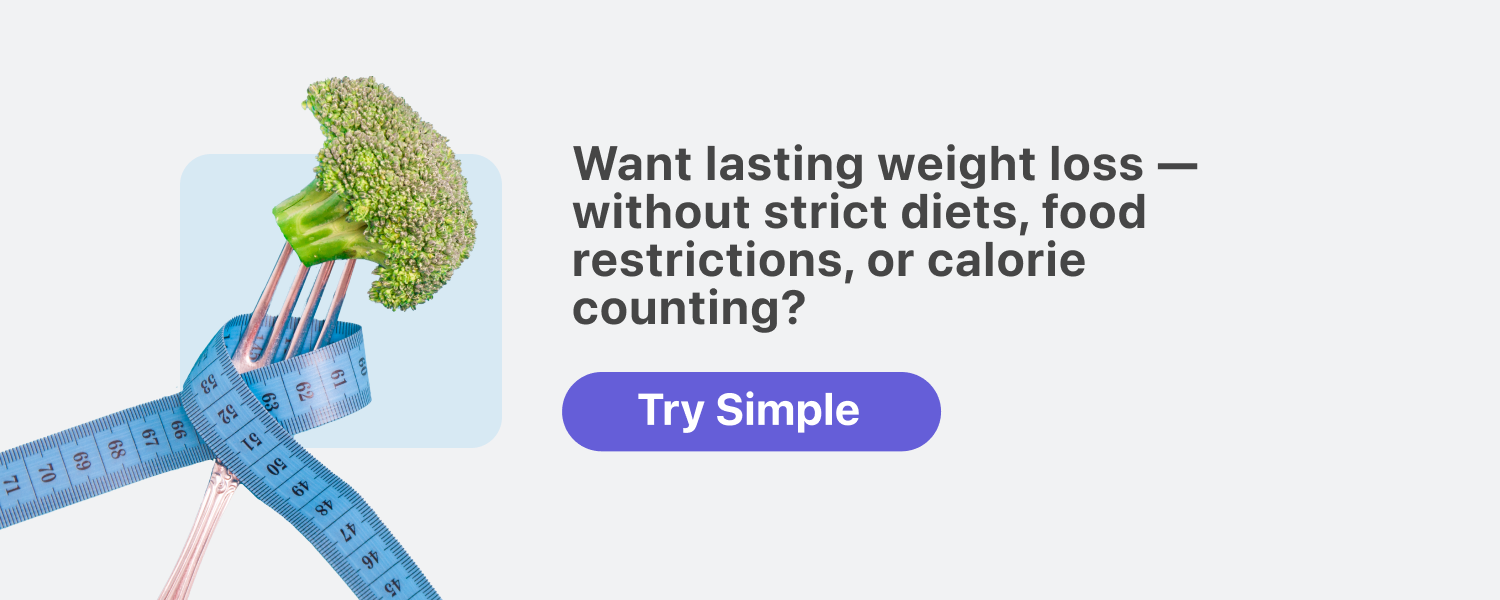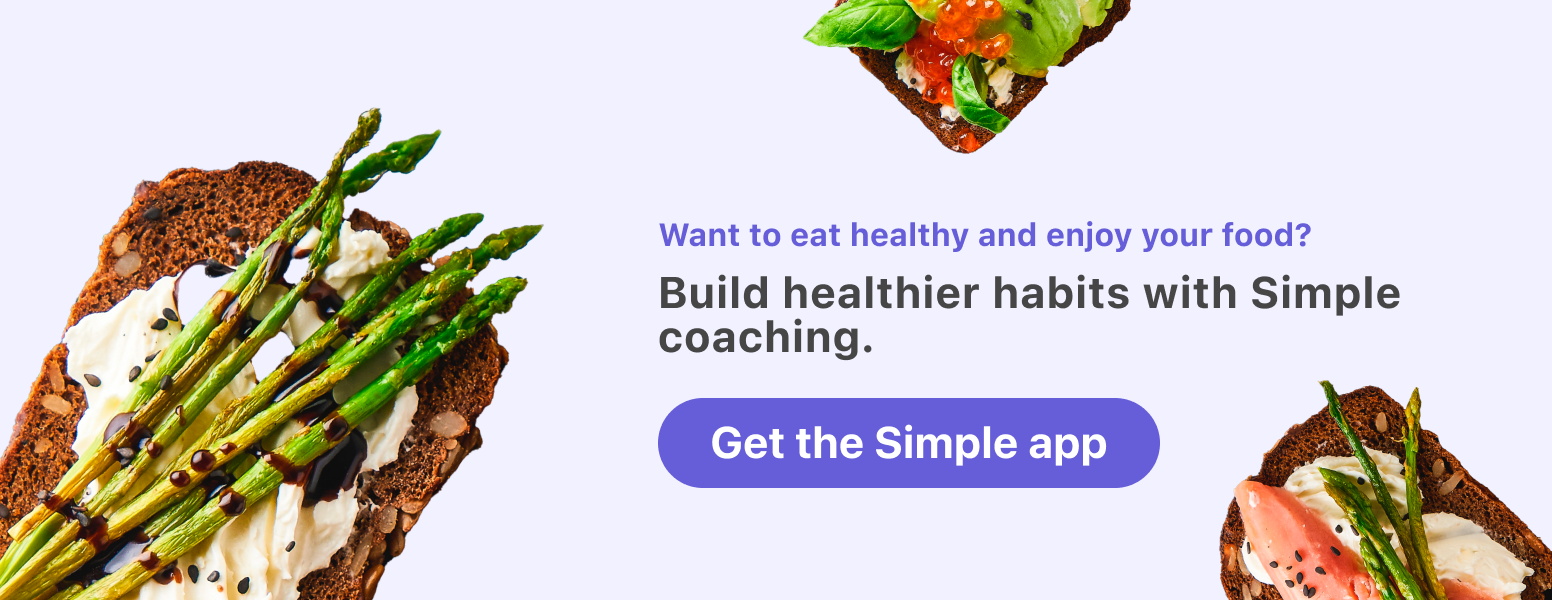What diets go best with intermittent fasting?

Intermittent fasting isn’t a diet. Instead, it’s a way of eating that involves alternating fasting and eating windows. Sometimes you eat, and sometimes you don’t. And ideally, when you do eat, you make healthy choices.

But what does that mean, exactly? What’s “regular eating” or a “healthy dietary pattern” as part of an intermittent fasting lifestyle? Is there a diet best to pair with intermittent fasting?
In this article, we’ll explore some popular diets and their effect on your intermittent fasting schedule.
These include:
- regional diets: Mediterranean, Nordic, and Japanese diets
- plant-based diets
- ketogenic diets
- paleo diets
- hypertension-lowering diets (DASH)
- fasting-mimicking diets
What defines a “healthy” diet?
The research is clear:
You can lose weight, get fitter, and be healthy on many types of diets.
Most reasonable and realistic diet plans — in other words, ways of eating without extreme rules or restrictions — will provide you with the nutrients and energy you need while helping you reach your goals. This is especially true when various diets are compared over the long term.[1,2,3,4]
Healthy and effective diets all share the following things:
- They provide you with the nutrients and energy (aka calories) your body needs.
- They help meet your baseline requirements for protein, fat, and fiber-rich carbohydrates — all things that your body needs to function.
- They emphasize minimally processed foods (e.g., fresh fruits and vegetables, grains).
- They limit highly processed foods (e.g., candy, fast food, chips).
- They help you eat mindfully, with awareness — whether that’s noticing your portion sizes, making wise food choices, being able to stop when you feel satiated, and so on.
- They give you a way of eating that is relatively simple and that you can stick to sustainably — rather than being “on” or “off” a complex or restrictive plan.
So, what could that look like for you?
Well, it depends.
Let’s look at some popular candidates.
- regional diets: Mediterranean, Nordic, and Japanese-style diets
- plant-based diets
- the keto diet
- the paleo diet
- the DASH diet
- fasting-mimicking diets
Important: Before making any major dietary change, especially with diets that significantly restrict food groups, consult with your healthcare provider.

Regional diets: Mediterranean, Nordic, and Japanese-style diets
Research suggests that many populations around the world might have a special secret to living longer and healthier.[5,6,7]
So-called “Blue Zones” seem to have lifestyles and nutrition patterns that give them a high quality of life and vibrant aging. People eating these diets tend to be leaner and have lower rates of chronic diseases like cardiovascular disease.[8]
Three dietary patterns from three different regions have sparked particular interest among nutrition researchers:
- The Mediterranean-style eating pattern, which emphasizes fruits and vegetables, beans and legumes, whole grains, fish and seafood, nuts and seeds, fermented foods like yogurt, and olive oil as one of the main fat sources.[9,10,11]
- The Nordic-style eating pattern from Scandinavian regions, which emphasizes fruits and vegetables, whole grains, nuts and seeds, fermented foods like yogurt, and fatty cold-water fish.[12]
- The Japanese-style eating pattern, particularly the Okinawan-style diet, which emphasizes fruits and vegetables, beans and legumes, slow-digesting starches like sweet potatoes, fish and seafood (along with seaweed), fermented foods such as natto, and lean, low-fat proteins.[13,14]
Regional diet how-tos
As you can guess, these dietary patterns are more alike than different.
All of them focus on:
- minimally processed foods, such as:
- fruits and vegetables
- whole grains
- beans and legumes
- nuts and seeds
- lean proteins, especially fish and seafood
- foods that are in season
- foods that offer a range of nutrients, including healthy fats
- higher-fiber and fermented foods that support gut health
The specific foods might vary. For instance, a Japanese dinner might include soybeans, while a Mediterranean dinner might include chickpeas. But the basic concepts (in this case, including nutrient-rich, high-fiber beans and legumes) are very similar.
You don’t have to live in these parts of the world to enjoy their dietary benefits. You can just implement some of the key ideas and foods you enjoy.
Regional diets and intermittent fasting
Intermittent fasting and these regional types of diets work together in the following ways:
- Helping you feel satisfied: Lean protein, healthy fats, and dietary fiber all work together to help you feel full. So, eating this way before you fast may help you feel more satiated during your fast.
- Supporting gut health: Evidence suggests that both these regional dietary patterns and intermittent fasting support gut health, mainly by supporting the gut microbiome (our collection of friendly bacteria, viruses, and fungi that live in our gastrointestinal tract).[15–19]
- Balancing blood sugar: Higher-carb foods in these dietary patterns are usually slower-digesting, and many foods in particular (such as beans and sweet potatoes) have been shown to support healthy blood sugar. (In fact, some components of East Asian varieties of sweet potato are currently being studied for a potential role in diabetes prevention.[20,21,22]) Fasting, too, has been shown to improve blood sugar control.[12,23,24]
- Lowering cardiovascular disease risk: Both fasting and these regional diet patterns have been shown to lower the overall risk of cardiovascular diseases, such as heart disease and stroke.[25,26,27]
- Mild calorie restriction: The Okinawan-style dietary pattern, in particular, also emphasizes “hara hachi bu,” a practice of eating to fill up only 80% of your stomach. While it’s not officially fasting, it’s a way of eating mindfully and restricting calories very slightly — a way of eating that’s been shown to help maintain a healthy body weight and delay aging.[28]
Plant-based diets and intermittent fasting

A plant-based diet is — you guessed it — a dietary pattern that is based mostly around plant foods. While some plant-based eaters include small amounts of animal products (like meat, poultry, fish, or eggs), others do not.
Researchers have found that following a well-designed plant-based diet can help people lose weight and lower their chances of developing certain chronic diseases — much like intermittent fasting does.[29,30]
For more on starting intermittent fasting on a plant-based diet, check out our vegan intermittent fasting guide here.
Plant-based diet how-tos
Build your plant-based diet from:
- fruits and vegetables, ideally colorful ones
- beans and legumes (like black beans, chickpeas, lentils, etc.)
- nuts and seeds (like almonds, walnuts, pumpkin seeds, etc.)
- whole grains (like quinoa, amaranth, brown rice, or steel-cut oats)
- minimally-processed oils (like extra-virgin olive oil)
Choose minimally processed versions of foods. Such as:
- whole grains instead of highly processed grains (like brown instead of white rice; kernel corn instead of corn chips)
- baked potatoes instead of French fries
- fresh fruit instead of fruit juice
- carrots instead of carrot cake (we know you knew that, but … it never hurts to hear it again)
Plant-based diets and intermittent fasting
Ideally, combine plant-based eating with a focus on nutrient density — i.e., choosing foods like fruits and vegetables that are high in vitamins, minerals, and plant nutrients (phytonutrients).
While you certainly can cover most of your nutritional bases with a well-designed plant-based diet, there are a few areas where it can be tricky. One thing to pay close attention to, for example, is getting enough energy. Since a plant-based diet is often lower in energy (calories) than a typical Western diet, skipping meals may lower calories even further.
Try logging your foods and drinks in the Simple food tracker to ensure you’re getting all the energy, protein, and other nutrients you need.
Ketogenic diets and intermittent fasting
The ketogenic, or “keto,” diet is a low-carbohydrate and high-fat diet. It encourages a state of ketosis in the body, which is what happens when glucose is no longer available for energy, and the body turns to ketones and fat-burning as an alternative fuel source.
The ketogenic diet is not new. However, in the past, it was used mainly as a medical diet for patients with epilepsy to reduce seizures. The anticonvulsant properties of the diet point to the effects of ketosis on the brain, and ketogenic diets are being studied as possible treatments for other brain diseases, such as dementia, Parkinson’s, and Alzheimer’s.[31–37]
In addition to the effects of ketosis on the brain, the ketogenic diet may reduce blood glucose levels in patients with type 2 diabetes[38] and may help decrease chronic pain.[39]
Ketogenic diet how-tos
While many people think of a keto diet as a high-protein diet, it’s actually a lower-protein, high-fat diet.
To achieve a state of ketosis, people are typically advised to eat:
- about 5% or less of their daily calories from carbohydrates;
- 20% protein; and
- 75% fat.
In a 2000-calorie diet, this might mean getting:
- 25 grams of carbs or less
- 100 grams of protein or less
- 167 grams of fat
A keto breakfast might include healthy fats such as avocado with a small portion of eggs for protein. A typical lunch or dinner on the ketogenic diet consists of a small grass-fed steak and large amounts of vegetables roasted in organic, grass-fed butter for a high-fat content.
Those on the keto diet avoid alcohol and sugary foods, including fruit. Beans, legumes, root vegetables, starches, and grains are all off the list due to their high carbohydrate content.
Recommended foods include eggs, fatty meats, and fish for protein, and organic, grass-fed butter and cream, cheese, nuts, avocados, and healthy oils like coconut oil, avocado oil, and extra virgin olive oil for fats.
Before going keto, we recommend that you first consult with your healthcare provider, especially if you have a background of cardiovascular disease or any other chronic health conditions.
The ketogenic diet and intermittent fasting
Fasting on a ketogenic diet can boost both the effects of the fast and ketosis in the following ways:
- Intermittent fasting also promotes ketosis, so this process can be maximized and ketosis reached sooner by combining a ketogenic diet and intermittent fasting.
- Ketosis reduces hunger (by suppressing the hunger hormone ghrelin), which can make it easier to stick to your fast.[40] Eating fat is also very satiating.
- Both intermittent fasting and keto help the body turn to fat as a source of energy.[41,42] When used together, this can maximize the fat-burning effect.
If you’d like to try combining the two, take our Simple quiz, and we’ll get you set up with an intermittent fasting schedule so you can get started today.
Paleo diets and intermittent fasting

A paleo-style diet emphasizes eating in ways our ancestors might have eaten before modern agriculture was developed.
Much like the regional-style diets, this focuses on eating minimally-processed whole foods over processed or manufactured foods. Unlike the regional-style diets, the paleo-style eating pattern is more restrictive, generally suggesting people avoid all grains, dairy products, and beans or legumes.
The assumption behind the paleo diet is that our human genome largely developed in pre-agricultural times, and thus, even today, is best served by this way of eating.
While there are debates about what is “truly” paleo or whether many of the claims about it are historically correct, most people do benefit from eating fewer manufactured, processed, and highly refined foods. Plus, some people with food sensitivities often find that eliminating most grains and dairy products can help with health issues.[43]
Studies suggest that a paleo style of eating lowers blood sugar and improves insulin sensitivity[44,45], improves cardiovascular disease markers[45], and reduces high blood pressure.
While not technically “paleo,” many indigenous groups are also finding that reclaiming traditional practices of hunting and gathering along with consuming ancestral foods are improving their health as well as their cultural identities.
Paleo diet how-tos
What can you eat on the paleo diet? In general, anything that humans might have found or hunted over 10,000 years ago, including:
- lean proteins like grass-fed meats, wild game, fish and seafood, eggs, etc.
- vegetables
- nuts and seeds
Many paleo diet fans advocate for eating all parts of an animal, such as organ meats or boiling bones and connective tissues for broth.
Some people include starchy tubers like sweet potatoes or cassava (since these are part of most ancestral diets), while others don’t.
Fruits are consumed only in limited amounts in their whole food form. For example, if cavemen wouldn’t have blended 20 oranges into a 16-ounce juice, you won’t be able to either.
For the same reason, people avoid “natural” sweeteners due to the high concentration of sugar that would never be found in nature. (Fun fact, though — some modern foraging populations like the Hadza include a significant amount of honey in their diets.[46])
In general, most paleo diet adherents avoid grains, beans and legumes, and dairy products. Some people on the paleo diet consume grass-fed butter and fermented dairy products in limited amounts, although the purists would say these are off-limits.
(BTW, if you’ve gotten the okay from your doctor to combine fasting and paleo, tag us in, and we’ll do the heavy lifting in creating a customized plan and meal guide. Take our Simple quiz to get started today!)

The paleo diet and intermittent fasting
Both the paleo diet and intermittent fasting evoke an era where humans lived as hunters and gatherers, eating as food was available versus three steady meals per day.
Intermittent fasting and the paleo diet work together in the following ways:
- While fasting promotes insulin sensitivity and low blood sugar, especially in people living with type 2 diabetes,[47] the paleo diet prevents these numbers from spiking once you eat again.[48]
- By decreasing highly processed foods that are linked to inflammation,[49] you reap the possible benefits of reduced inflammation achieved by fasting.[50]
- A paleo diet can decrease hunger and cravings by putting an end to the insulin spike and subsequent crash triggered by highly processed, fast-digesting foods that are typically high in sugar, salt, and/or saturated fats.[51] This makes it easier to stick with your fast.
- The paleo diet can help ensure your nutritional needs are met during intermittent fasting by focusing on protein intake and a variety of nutrient-rich vegetables instead of grains.
- Low-intensity movement while fasted — as, for instance, early humans might have done while walking long distances hunting and gathering — may also help improve fat burning and metabolic health.[52,53,54]
Dietary approaches to stop hypertension (DASH) diet
Hypertension, or high blood pressure, is linked to many chronic diseases. Because sodium affects blood pressure and fluid balance in our bodies, eating less sodium (salt) is part of treating high blood pressure.
The DASH Diet, or Dietary Approaches to Stop Hypertension, is a low-sodium (aka low-salt) diet that helps fight high blood pressure.[55,56,57] It’s not specifically a weight loss diet, but some people did lose weight when they followed the DASH guidelines.
DASH diet how-tos
Since most of our dietary salt / sodium intake comes from highly processed foods, one of the simplest ways to cut sodium is to eat fewer of those foods, such as:
- processed deli meats (e.g., salami, pepperoni, bacon, etc.)
- frozen entrées (e.g., frozen pizzas, fish sticks, chicken nuggets, etc.)
- takeout foods (e.g., pizza, burgers, etc.)
- other processed foods high in sugar, salt, and fat (e.g., baked goods, packaged snack foods, etc.)
This low-sodium, low-fat diet suggests that people eat more vegetables and fruits, whole grains, beans and legumes, nuts and seeds, lean proteins, and low-fat dairy products while eating less salt, added sugar, and saturated fats.
Eating more minimally processed foods helps increase potassium intake, which helps balance sodium.
The DASH guidelines also recommend walking after meals to help regulate blood sugar and lipids (fats).
The DASH diet and intermittent fasting
As with intermittent fasting, the DASH dietary pattern can often help with:
- lowering blood pressure
- the total cholesterol and low-density lipoprotein (LDL)
- losing body weight and fat
- improving blood sugar control
- the markers of inflammation
Like intermittent fasting, it might help lower some people’s risk of cardiovascular disease, stroke, diabetes, and cancers along with improving blood pressure.[55,56,57]
Fasting-mimicking diets

The intermittent fasting-mimicking diet, or FMD, differs from intermittent fasting in that you continue to eat, albeit in very small amounts, during the “fasting” window. Usually, a fasting-mimicking diet lasts for about five days, during which you consume 40% of the calories you normally would.
Advocates of the intermittent fasting-mimicking diet say that it offers similar benefits to intermittent fasting while putting less stress on the body and mind. They argue that it’s especially helpful for those new to fasting who may find it stressful to completely abstain from food for 12 hours or more.[58,59]
Different from long-term calorie restriction, the FMD is considered safe because calories are restricted for no more than five days. Researchers suggest repeating this five-day diet twice yearly, quarterly, or as often as once per month.
Fasting-mimicking diet how-tos
A fasting-mimicking diet is, first and foremost, low in calories — anywhere from 500 to 1,200 calories per day.
On a 5-day protocol, generally, calories start higher and then taper toward the lowest calories on the last day.
- 35% to 55% of daily calories come from carbohydrates.
- 35% to 45% of daily calories come from fat (mainly unsaturated fats).
- The remaining 10% of daily calories come from protein.
While in general, protein is essential for health, the fasting-mimicking diet temporarily reduces protein.[59]
Fasting-mimicking vs. intermittent fasting
In theory, you could combine a fasting-mimicking diet with intermittent fasting.
For instance:
- On a 16:8 fast, you might consume the day’s small snacks and meals within an eight-hour window.
- Alternatively, you could slowly reduce calories from 1,200 to 700 over four days.
While intermittent fasting can be more of a long-term lifestyle choice for many people, the FMD is usually a specific, short-term, occasional dietary invention. In other words, you’re not meant to do it forever or even all that often. (Remember, researchers suggested it be done no more than once a month.)
While some find the FMD a good introduction to intermittent fasting, it should not be done together with intermittent fasting for a long time.
We don’t recommend FMD as one of our principal intermittent fasting approaches. If you want to try a FMD, seek medical supervision beforehand to ensure you do this safely.
Unlike many of the other diets we’ve discussed, this one is more of a “pick a lane” situation:
- Time-restricted fasting (like 16:8) can be done sustainably if what you eat during your eating window provides you with enough energy and nutrients for good health.
- A fasting-mimicking diet is a short-term, occasional intervention that is meant to be done less often — certainly not as a long-term eating pattern.
There isn’t really one. But, in general, you have to eat fewer calories than you burn to lose weight.
Ideally, you can do this by making nutritional choices that help improve feelings of fullness (satiety) and decrease feelings of hunger.
Not necessary. Carbohydrates are an important source of energy for the body.
While a keto diet keeps carbs very low, other successful weight loss diets don’t require you to cut out all carbs.
If you do include carbs in your diet, focus on choosing slow-digesting complex carbohydrates, including whole grains such as quinoa and barley, and controlling portion sizes.

- Chawla S, Tessarolo Silva F, Amaral Medeiros S, Mekary RA, Radenkovic D. The effect of low-fat and low-carbohydrate diets on weight loss and lipid levels: A systematic review and meta-analysis. Nutrients. 2020 Dec 9;12(12).
- Gardner CD, Trepanowski JF, Del Gobbo LC, Hauser ME, Rigdon J, Ioannidis JPA, et al. Effect of low-fat vs low-carbohydrate diet on 12-month weight loss in overweight adults and the association with genotype pattern or insulin secretion: The DIETFITS randomized clinical trial. JAMA. 2018 Feb 20;319(7):667–79.
- Apekey TA, Maynard MJ, Kittana M, Kunutsor SK. Comparison of the Effectiveness of low carbohydrate versus low fat diets, in type 2 diabetes: Systematic review and meta-analysis of randomized controlled trials. Nutrients. 2022 Oct 19;14(20).
- Ge L, Sadeghirad B, Ball GDC, da Costa BR, Hitchcock CL, Svendrovski A, et al. Comparison of dietary macronutrient patterns of 14 popular named dietary programmes for weight and cardiovascular risk factor reduction in adults: Systematic review and network meta-analysis of randomised trials. BMJ. 2020 Apr 1;369:m696.
- Poulain M, Pes GM, Grasland C, Carru C, Ferrucci L, Baggio G, et al. Identification of a geographic area characterized by extreme longevity in the Sardinia island: The AKEA study. Exp Gerontol. 2004 Sep;39(9):1423–9.
- Salaris L, Poulain M, Samaras TT. Height and survival at older ages among men born in an inland village in Sardinia (Italy), 1866-2006. Biodemography Soc Biol. 2012;58(1):1–13.
- Willcox BJ, Willcox DC, He Q, Curb JD, Suzuki M. Siblings of Okinawan centenarians share lifelong mortality advantages. J Gerontol A Biol Sci Med Sci. 2006 Apr;61(4):345–54.
- Song M, Fung TT, Hu FB, Willett WC, Longo VD, Chan AT, et al. Association of animal and plant protein intake with all-cause and cause-specific mortality. JAMA Intern Med. 2016 Oct 1;176(10):1453–63.
- Guasch-Ferré M, Willett WC. The Mediterranean diet and health: A comprehensive overview. J Intern Med. 2021 Sep;290(3):549–66.
- Papadaki A, Nolen-Doerr E, Mantzoros CS. The effect of the Mediterranean diet on metabolic health: A systematic review and meta-analysis of controlled trials in adults. Nutrients. 2020 Oct 30;12(11).
- García-Montero C, Fraile-Martínez O, Gómez-Lahoz AM, Pekarek L, Castellanos AJ, Noguerales-Fraguas F, et al. Nutritional components in Western diet versus Mediterranean diet at the gut microbiota–immune system interplay. Implications for health and disease. Nutrients. 2021 Feb 22;13(2):699.
- Krznarić Ž, Karas I, Ljubas Kelečić D, Vranešić Bender D. The Mediterranean and Nordic diet: A review of differences and similarities of two sustainable, health-promoting dietary patterns. Front Nutr. 2021 Jun 25;8:683678.
- Dominguez LJ, Veronese N, Baiamonte E, Guarrera M, Parisi A, Ruffolo C, et al. Healthy aging and dietary patterns. Nutrients. 2022 Feb 20;14(4).
- Tsugane S. Why has Japan become the world’s most long-lived country: Insights from a food and nutrition perspective. Eur J Clin Nutr. 2021 Jun;75(6):921–8.
- Frank J, Gupta A, Osadchiy V, Mayer EA. Brain-gut-microbiome interactions and intermittent fasting in obesity. Nutrients. 2021 Feb 10;13(2).
- Daas MC, de Roos NM. Intermittent fasting contributes to aligned circadian rhythms through interactions with the gut microbiome. Benef Microbes. 2021 Apr 12;12(2):147–61.
- Hu D, Xie Z, Ye Y, Bahijri S, Chen M. The beneficial effects of intermittent fasting: An update on mechanism, and the role of circadian rhythm and gut microbiota. Hepatobiliary Surg Nutr. 2020 Oct;9(5):597–602.
- Teker HT, Ceylani T. Intermittent fasting supports the balance of the gut microbiota composition. Int Microbiol. 2023 Jan;26(1):51–7.
- Landberg R, Hanhineva K. Biomarkers of a healthy nordic diet-from dietary exposure biomarkers to microbiota signatures in the metabolome. Nutrients. 2019 Dec 20;12(1).
- Naomi R, Bahari H, Yazid MD, Othman F, Zakaria ZA, Hussain MK. Potential effects of sweet potato (Ipomoea batatas) in hyperglycemia and dyslipidemia—a systematic review in diabetic retinopathy context. Int J Mol Sci. 2021 Oct 6;22(19):10816.
- Alam MK. A comprehensive review of sweet potato (Ipomoea batatas [L.] Lam): Revisiting the associated health benefits. Trends Food Sci Technol. 2021 Sep 1;115:512–29.
- Arisanti CIS, Wirasuta IMAG, Musfiroh I, Ikram EHK, Muchtaridi M. Mechanism of anti-diabetic activity from sweet potato (Ipomoea batatas): A systematic review. Foods. 2023 Jul 24;12(14).
- Ohlsson B. An Okinawan-based Nordic diet improves glucose and lipid metabolism in health and type 2 diabetes, in alignment with changes in the endocrine profile, whereas zonulin levels are elevated. Exp Ther Med. 2019 Apr;17(4):2883–93.
- Zimorovat A, Mohammadi M, Ramezani-Jolfaie N, Salehi-Abargouei A. The healthy Nordic diet for blood glucose control: A systematic review and meta-analysis of randomized controlled clinical trials. Acta Diabetol. 2020 Jan;57(1):1–12.
- Martínez-González MA, Gea A, Ruiz-Canela M. The Mediterranean diet and cardiovascular health. Circ Res. 2019 Mar;124(5):779–98.
- Sánchez-Sánchez ML, García-Vigara A, Hidalgo-Mora JJ, García-Pérez MÁ, Tarín J, Cano A. Mediterranean diet and health: A systematic review of epidemiological studies and intervention trials. Maturitas. 2020 Jun;136:25–37.
- Bojang KP, Manchana V. Nutrition and healthy aging: A review. Curr Nutr Rep. 2023 Sep;12(3):369–75.
- Pignolo RJ. Exceptional human longevity. Mayo Clin Proc. 2019 Jan;94(1):110–24.
- Turner-McGrievy G, Mandes T, Crimarco A. A plant-based diet for overweight and obesity prevention and treatment. J Geriatr Cardiol. 2017 May;14(5):369–74.
- Dinu M, Abbate R, Gensini GF, Casini A, Sofi F. Vegetarian, vegan diets and multiple health outcomes: A systematic review with meta-analysis of observational studies. Crit Rev Food Sci Nutr. 2017 Nov 22;57(17):3640–9.
- Davis JJ, Fournakis N, Ellison J. Ketogenic diet for the treatment and prevention of dementia: A review. J Geriatr Psychiatry Neurol. 2021 Jan;34(1):3–10.
- Sacchetti P, Jain S, Yadav H, Paoli A. Editorial: Impact of ketogenic diet on metabolic and brain health. Front Neurosci. 2022;16:1107741.
- Chinna-Meyyappan A, Gomes FA, Koning E, Fabe J, Breda V, Brietzke E. Effects of the ketogenic diet on cognition: A systematic review. Nutr Neurosci. 2022 Nov 10;1–21.
- Mattson MP, Moehl K, Ghena N, Schmaedick M, Cheng A. Intermittent metabolic switching, neuroplasticity and brain health. Nat Rev Neurosci. 2018 Feb;19(2):63–80.
- Gough SM, Casella A, Ortega KJ, Hackam AS. Neuroprotection by the Ketogenic diet: Evidence and controversies. Front Nutr. 2021 Nov 23;8:782657.
- Cunnane SC, Courchesne-Loyer A, St-Pierre V, Vandenberghe C, Pierotti T, Fortier M, et al. Can ketones compensate for deteriorating brain glucose uptake during aging? Implications for the risk and treatment of Alzheimer’s disease. Ann N Y Acad Sci. 2016 Mar;1367(1):12–20.
- Ferreira ST, Clarke JR, Bomfim TR, De Felice FG. Inflammation, defective insulin signaling, and neuronal dysfunction in Alzheimer’s disease. Alzheimers Dement. 2014 Feb;10(1 Suppl):S76–83.
- Yancy WS Jr, Foy M, Chalecki AM, Vernon MC, Westman EC. A low-carbohydrate, ketogenic diet to treat type 2 diabetes. Nutr Metab . 2005 Dec 1;2:34.
- Masino SA, Ruskin DN. Ketogenic diets and pain. J Child Neurol. 2013 Aug;28(8):993–1001.
- Deemer SE, Plaisance EP, Martins C. Impact of ketosis on appetite regulation: A review. Nutr Res. 2020 May;77:1–11.
- Welton S, Minty R, O’Driscoll T, Willms H, Poirier D, Madden S, et al. Intermittent fasting and weight loss: Systematic review. Can Fam Physician. 2020 Feb;66(2):117–25.
- Ting R, Dugré N, Allan GM, Lindblad AJ. Ketogenic diet for weight loss. Can Fam Physician. 2018 Dec;64(12):906.
- Cambeses-Franco C, González-García S, Feijoo G, Moreira MT. Is the Paleo diet safe for health and the environment? Sci Total Environ. 2021 Aug 10;781:146717.
- Masharani U, Sherchan P, Schloetter M, Stratford S, Xiao A, Sebastian A, et al. Metabolic and physiologic effects from consuming a hunter-gatherer (Paleolithic)-type diet in type 2 diabetes. Eur J Clin Nutr. 2015 Aug;69(8):944–8.
- Manheimer EW, van Zuuren EJ, Fedorowicz Z, Pijl H. Paleolithic nutrition for metabolic syndrome: Systematic review and meta-analysis. Am J Clin Nutr. 2015 Oct;102(4):922–32.
- Marlowe FW, Berbesque JC, Wood B, Crittenden A, Porter C, Mabulla A. Honey, Hadza, hunter-gatherers, and human evolution. J Hum Evol. 2014 Jun;71:119–28.
- Vitale R, Kim Y. The effects of intermittent fasting on glycemic control and body composition in adults with obesity and type 2 diabetes: A systematic review. Metab Syndr Relat Disord. 2020 Dec;18(10):450–61.
- Jamka M, Kulczyński B, Juruć A, Gramza-Michałowska A, Stokes CS, Walkowiak J. The effect of the Paleolithic diet vs. healthy diets on glucose and insulin homeostasis: A systematic review and meta-analysis of randomized controlled trials. J Clin Med Res. 2020 Jan 21;9(2).
- Tristan Asensi M, Napoletano A, Sofi F, Dinu M. Low-grade inflammation and ultra-processed foods consumption: A review. Nutrients. 2023 Mar 22;15(6).
- Wang X, Yang Q, Liao Q, Li M, Zhang P, Santos HO, et al. Effects of intermittent fasting diets on plasma concentrations of inflammatory biomarkers: A systematic review and meta-analysis of randomized controlled trials. Nutrition. 2020 Aug 12;79-80:110974.
- Jönsson T, Granfeldt Y, Hallberg AC. Subjective satiety and other experiences of a Paleolithic diet compared to a diabetes diet in patients with type 2 diabetes. Nutr J. 2013 Jul 29;12(1):1–7.
- Vicente-Salar N, Urdampilleta Otegui A, Roche Collado E. Endurance training in fasting conditions: Biological adaptations and body weight management. Nutr Hosp. 2015 Dec 1;32(6):2409–20.
- Zouhal H, Saeidi A, Salhi A, Li H, Essop MF, Laher I, et al. Exercise training and fasting: Current insights. Open Access J Sports Med. 2020 Jan 21;11:1–28.
- Van Proeyen K, Szlufcik K, Nielens H, Ramaekers M, Hespel P. Beneficial metabolic adaptations due to endurance exercise training in the fasted state. J Appl Physiol. 2011 Jan;110(1):236–45.
- Soltani S, Arablou T, Jayedi A, Salehi-Abargouei A. Adherence to the Dietary Approaches to Stop Hypertension (DASH) diet in relation to all-cause and cause-specific mortality: A systematic review and dose-response meta-analysis of prospective cohort studies. Nutr J. 2020 Apr 22;19(1):37.
- Theodoridis X, Chourdakis M, Chrysoula L, Chroni V, Tirodimos I, Dipla K, et al. Adherence to the DASH diet and risk of hypertension: A systematic review and meta-analysis. Nutrients. 2023 Jul 24;15(14).
- Sacks FM, Svetkey LP, Vollmer WM, Appel LJ, Bray GA, Harsha D, et al. Effects on blood pressure of reduced dietary sodium and the dietary approaches to Stop Hypertension (DASH) Diet. N Engl J Med. 2001 Jan 4;344(1):3–10.
- Wei S, Han R, Zhao J, Wang S, Huang M, Wang Y, et al. Intermittent administration of a fasting-mimicking diet intervenes in diabetes progression, restores β cells and reconstructs gut microbiota in mice. Nutr Metab . 2018 Nov 20;15:80.
- Brandhorst S, Longo VD. Protein quantity and source, fasting-mimicking diets, and longevity. Adv Nutr. 2019 Nov 1;10(Suppl_4):S340–50.
